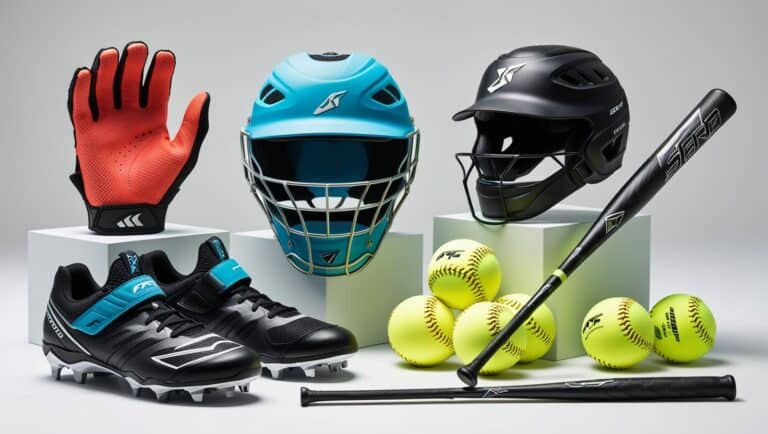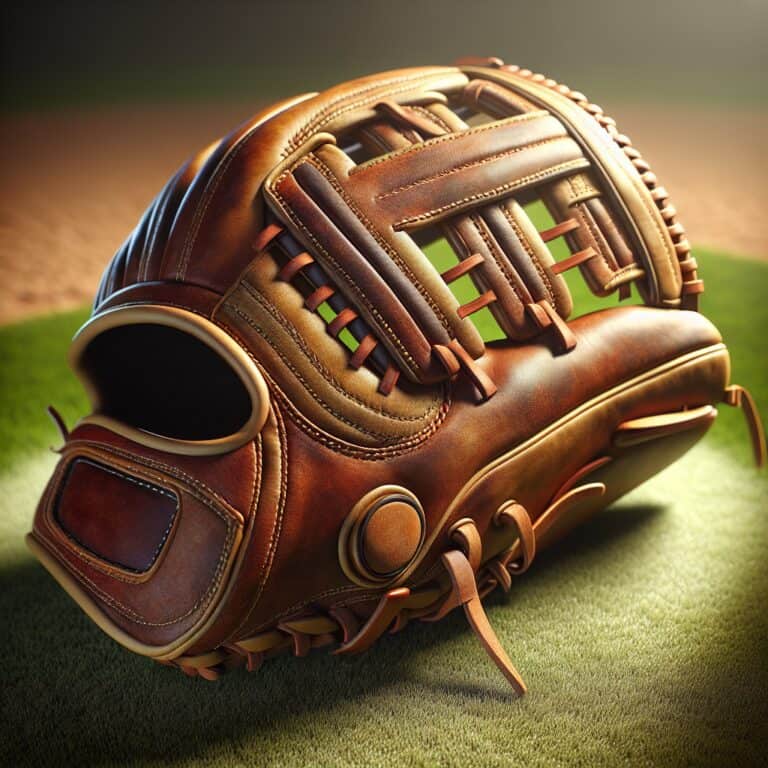Essential Softball Injury Prevention Tips For 2025!

Hey there, softball superstars! Did you know that a majority of softball injuries are preventable? That’s right! As a current softball player for over 25 years and coach, I’ve seen my fair share of injuries on the diamond. I’m here to share some game-changing tips to keep you safe and crushing it on the field. Whether you’re a seasoned pro or just starting out, these softball injury prevention strategies will help you stay in the game and off the bench. Let’s dive in and make 2024 your healthiest season yet!
Understanding Common Softball Injuries
Let’s talk about something that’s a real pain in the butt for us softball players – injuries. I’ve been around the diamond for a while now, I can’t believe it has been over 25 years now and I’ve seen many players sidelined by various aches and pains. It’s not just about the ouch factor; these injuries can seriously mess with a player’s game and even their whole season.
Did you know that softball actually has a pretty high injury rate? The most common culprits? Sprains, strains, and those pesky overuse injuries that creep up on ya.
I remember this one time, our fastest runner pulled his hamstring running the bases right before the season ending championship tournament. Talk about bad timing! It really drove home how important softball injury prevention is. We can’t just brush this stuff off, ya know? If we want to keep playing the game we love (I do!), we’ve gotta take care of our bodies.
That’s why its always important to be proactive. It’s not just about dealing with injuries when they happen – it’s about stopping them before they start. Think of it like oiling your glove; you don’t wait for it to get all stiff and cracked before taking care of it, right? Same goes for our bodies.
Proper Warm-up and Stretching Techniques
Alright, let’s get into the details of warming up. I know, I know, it’s not the most exciting part of the game, but it’s crucial for softball injury prevention. I’ve seen too many players try to jump right into a game cold, and that is just a disaster waiting to happen. You may get away with it from time to time but it isn’t worth it for when that injury comes around!
First things first, you gotta get that blood pumping. I like to start with some light jogging, maybe some high knees and butt kicks. Then we move into some dynamic stretches – think arm circles, leg swings, and torso twists. The key here is to keep moving.
Once you’ve got the basics down, it’s time to focus on the muscle groups you use most in softball. For pitchers, I always emphasize shoulder and arm exercises. Catchers, you gotta pay extra attention to those legs and back. Fielders, don’t forget about your core and quick lateral movements. All of us have to run so those hamstrings are a must!
Here’s a pro tip: gradually increase the intensity of your warm-up. Start slow and easy, then build up to more game-like movements. It’s like easing into a hot tub – you don’t just cannonball in, right?
I remember this one coach who used to make us do a full-on workout before games when I was in high school. Man, we were exhausted before we even started playing! Don’t be that person. The warm-up should prepare you, not wear you out.
Mastering Softball-Specific Techniques for Injury Prevention
Now, let’s talk about the actual playing part. Proper technique isn’t just about looking good or playing well – it’s a huge part of softball injury prevention. I’ve seen way too many players get hurt because they were using poor form.
Let’s start with throwing. I can’t stress enough how important it is to use the whole body, not just the arm. It’s all about that kinetic chain – feet, legs, hips, core, then the arm. If you think you can throw with just your arm you are in for a rude awakening! You could easily ended up with a nasty case of tennis elbow. Not fun.
Sliding is another big one. I know we all wanna be heroes and make those dramatic plays, but safety first, my softball friends! Always slide feet-first, and practice on a slip-and-slide if you have to. It’s better than faceplanting into second base? Right?
When it comes to batting, it’s all about the stance and swing. Keep your back straight, your weight balanced, and your wrists firm. I’ve seen too many players tweak their backs or develop wrist problems from poor batting form.
Remember, practice doesn’t make perfect – practice makes better. It’s better to take it slow and get the technique right than to ingrain bad habits that’ll come back to bite you later.
Essential Protective Gear for Softball Injury Prevention
Alright, listen up! This might not be the sexiest topic, but it’s crucial for softball injury prevention. I’ve seen too many players skimp on proper equipment and pay the price.
Let’s talk shoes. I know those fancy cleats look cool, but if they don’t fit right or provide proper support, you’re asking for trouble. Different field conditions call for different types of cleats or turf shoes, so don’t be afraid to have a couple of pairs.
This is a big NO, NO! In my book when players just wear regular shoes to play softball. Regular shoes aren’t designed to dig into the infield dirt and support your ankles and feet. I have seen way too many injuries because of players slipping while wearing regular shoes.
For you catchers out there, even for slow-pitch softball I recommend the whole shebang – mask, chest protector, shin guards, the works. And make sure they fit properly! Those foul tips come out of no where. Plus you don’t want to get cleated in your shins on a play at home. Not pretty!
Don’t forget about the little things either. Mouthguards can save your teeth (and your wallet), and batting gloves can prevent blisters. It might seem like overkill, but trust me, when it comes to softball injury prevention, it’s better to be safe than sorry.
Strength and Conditioning Exercises for Softball Players
Let’s get pumped about pumping iron! Okay, maybe that’s a bit much, but seriously, strength and conditioning are key for softball injury prevention. It’s not just about getting muscular (though that’s a nice bonus); it’s about building a body that can handle the demands of the game.
First up, core exercises. A strong core is like the foundation of a house – everything else depends on it. Planks, Russian twists, and medicine ball throws are all great for building that solid base. Plus, a strong core helps with everything from batting to fielding.
For pitchers and other throwing positions, shoulder and rotator cuff exercises are crucial. Resistance band exercises are your best friend here. I’ve seen too many players ignore these smaller muscles and end up with nasty shoulder injuries.
Don’t forget about those legs! Squats, lunges, and plyometrics will help you build the explosive power you need for sprinting and quick direction changes. Plus, strong legs can help prevent knee injuries, which are all too common in softball.
Remember, it’s not about lifting the heaviest weights or doing the most reps. Focus on proper form and consistency. A well-rounded strength program, combined with good technique, is your best bet for softball injury prevention.
The Role of Nutrition in Softball Injury Prevention
Nutrition plays a huge role in softball injury prevention, and I’m not just talking about avoiding the concession stand hot dogs (though that’s probably a good idea too).
First things first, hydration is key. I can’t tell you how many times I’ve seen players cramp up or get dizzy because they weren’t drinking enough water. And I’m not just talking about during the game – you need to be hydrating before and after too. Sports drinks can be good for those long tournaments, but don’t overdo it on the sugary stuff.
When it comes to food, think of your body like a high-performance car. You wouldn’t put cheap gas in a Ferrari, right? Same goes for your body. Load up on lean proteins, complex carbs, and plenty of fruits and veggies. These will give you the energy you need and help your muscles recover faster.
Speaking of recovery, don’t forget about post-game nutrition. I recommend having a snack with both protein and carbs within 30 minutes after playing. It helps kick-start that recovery process.
Now, about supplements. They can be helpful, but they’re not magic pills. If you’re thinking about taking any, make sure to talk to a doctor or nutritionist first. And remember, no supplement can replace a good diet and proper hydration.
Rest and Recovery: Key Components of Injury Prevention
Alright, time to talk about something that doesn’t get enough love in the softball world – rest and recovery. I know, I know, you’re all gung-ho about practicing 24/7, but trust me, taking time off is crucial for softball injury prevention.
First up, sleep. It’s not just for beauty, my softball friends! Getting enough shut-eye is super important for athletic performance and injury prevention. I’m talking 7-9 hours a night, consistently. I’ve seen too many players try to get by on 5 hours of sleep and then wonder why they’re always sore, getting injured or not playing up to their standards.
Between games and practices, active recovery is your friend. Light jogging, swimming, or even yoga can help keep you limber without putting too much stress on your body. It’s like giving your muscles a nice, gentle massage.
Here’s something to keep in mind: more isn’t always better. I’ve seen players push themselves to the brink thinking it’ll make them better, but all it does is increase their risk of injury. Learn to recognize the signs of overtraining – constant fatigue, decreased performance and mood changes. If you’re feeling burnt out, it’s okay to take a step back.
Remember, rest isn’t just physical – it’s mental too. Take some time to do things you enjoy outside of softball. It’ll help keep you fresh and excited about the game.
Mental Preparation and Its Impact on Injury Prevention
Let’s get inside your head for a minute. No, I’m not trying to psychoanalyze you – I’m talking about mental preparation and how it relates to softball injury prevention. Trust me, it’s more connected than you might think.
First off, stress management is huge. When you’re stressed, your body tenses up, and tense muscles are more prone to injury. I’ve seen players get so worked up before big games that they end up playing tight and hurting themselves. Deep breathing exercises, meditation, or even just listening to some chill music can help you relax.
Visualization is another powerful tool. Spend some time before games or practices imagining yourself making perfect plays. It’s not just about boosting confidence – it can actually help improve your form and reduce your risk of injury.
Speaking of confidence, it’s a key factor in injury prevention. When you’re confident in your abilities, you’re more likely to make smart decisions on the field. You won’t overextend yourself trying to make impossible plays, and you’ll trust your training when it comes to proper technique.
Remember, mental toughness isn’t about ignoring pain or pushing through injuries. It’s about being smart, staying focused, and knowing your limits. A clear, calm mind is one of your best tools for softball injury prevention.
Creating a Softball Injury Prevention Program
Alright, team, it’s time to put it all together and create a kick-butt softball injury prevention program. Don’t worry, it’s not as complicated as it sounds – think of it like creating a game plan, but for keeping yourself healthy.
First step: assess where you’re at. Be honest with yourself about your strengths and weaknesses. Maybe you’ve got a shoulder that’s been giving you trouble, or your flexibility isn’t what it used to be. Identifying these areas is key to creating an effective program.
Next, start incorporating the elements we’ve talked about into your regular routine. This means proper warm-ups before every practice and game, strength training exercises tailored to your position, and good nutrition habits. Don’t try to change everything at once – start small and build up.
Here’s a pro tip: keep a log of what you’re doing and how you’re feeling. It’ll help you track your progress and identify what’s working (and what’s not). Plus, it’s pretty motivating to see how far you’ve come!
Remember, this isn’t a one-and-done deal. Your softball injury prevention program should evolve as you do. As you get stronger or your playing style changes, adjust your program accordingly.
And don’t forget to make it fun! Maybe challenge your teammates to see who can stick to their program the best, or reward yourself for hitting your goals. The more you enjoy it, the more likely you are to stick with it.
When to Seek Professional Help for Softball Injuries
Okay, let’s wrap this up with some real talk about when to call in the pros. As much as we focus on softball injury prevention, sometimes stuff happens. The key is knowing when to tough it out and when to seek help.
First off, learn to recognize the early warning signs of injuries. That little twinge in your shoulder? That soreness that doesn’t go away after a day or two? Don’t ignore it! There are too many players who try to “play through the pain” and end up with much more serious injuries.
If you’re experiencing persistent pain, swelling, or limited range of motion, it’s time to see a doctor. And I’m not talking about Dr. Google or your buddy who took a first aid course once. I mean a real medical professional, preferably one who specializes in sports medicine.
Working with a sports medicine pro isn’t just about treating injuries – they can be a great resource for softball injury prevention too. They can help you identify weak areas and give you specific exercises to strengthen them.
Remember, seeking help isn’t a sign of weakness – it’s a sign that you’re serious about your game and your health. The sooner you address potential issues, the sooner you can get back to playing the game you love.
And hey, if you do end up needing treatment or rehab, stick with it! I know it can be frustrating to be sidelined, but following your treatment plan is crucial for a full recovery and preventing future injuries.
Alright, team! We’ve covered all the bases when it comes to softball injury prevention. Remember, staying safe on the field is just as important as hitting that game-winning home run. By implementing these tips and techniques, you’ll not only reduce your risk of injuries but also improve your overall performance. So, are you ready to step up to the plate and take charge of your softball health? Let’s make this season your best and safest yet! Keep practicing, stay vigilant, and most importantly, have fun out there. Play ball!
Craving more softball wisdom? Unlock game-changing tips below!






